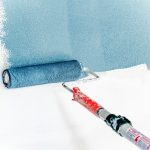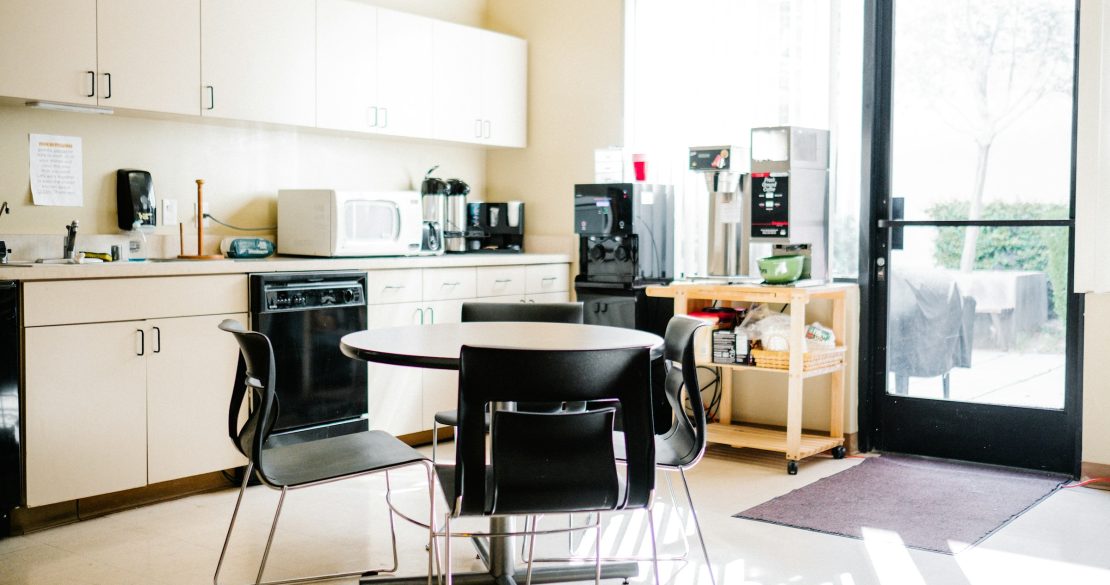The building and construction industry has been working for decades to reduce its carbon footprint and impact on the environment and create a cleaner, greener built environment. The incorporation of sustainable building materials and practices over the years has come a long way in helping control the health of the environment and community surrounding the building.
Cleaning up the surrounding area is a priority of many builders and construction companies, including adhering to Leadership in Energy and Environmental Design (LEED) certification standards. These standards can be applied to both commercial and residential buildings. But a newer program (it’s still in pilot stages!) known as WELL is breaking out as another preference for companies looking to make an environmental impact, but with a focus on the health and well-being of occupants.
Table of Contents
What is WELL?
What is WELL Certification?
Concepts of WELL
Air
Water
Nourishment
Light
Fitness
Comfort
Mind
Materials
Features
Project Types
Businesses Benefiting from WELL Certification
Retail
Multifamily Residential
Education
Restaurant
Commercial Kitchens
Final Thoughts
What is WELL?
The WELL Building Standard is a set of standards that present a holistic approach to health in the built environment. These standards put occupants’ health and wellness at the forefront of the built environment and address behavior, operations, and design. It is governed by the International WELL Building Institute (IWBI).
What is WELL Certification?
Well certification is a performance-based system of measuring, certifying, and monitoring features of the built environment which impact human health and well-being through the evaluation of air, water, nourishment, light, fitness, comfort and mind standards.
The WELL standards are grounded by a body of medical research exploring the connection between the buildings we spend more than 90% of our time and the health and wellness impacts on its occupants. WELL Certified™ spaces and buildings help create a built environment that includes quality of life improvements to nutrition, fitness, mood, sleep patterns, and overall performance of occupants.
Concepts of WELL
There are seven key points to address when designing a building to meet WELL standards. They are not just check boxes
Air
The health of the built environment and its occupants starts with the air. Healthy indoor air helps mitigate medical conditions like allergies and asthma, chronic fatigue, eye irritations, headaches, and the ability to focus.
Water
Earth is covered with over 70% water. Of course not all of that is potable without thorough desalination and purifying processes. The average human can survive a little less than three weeks without clean drinking water. It’s safe to say water plays an important part of our lives. Having good quality water available reduces fatigue, lowers blood pressure, and improves things like neurophysiological and gastrointestinal health.
Nourishment
Keeping your body fit and healthy includes regular, good nutrition. The average adult human can typically go up to three weeks without food, but will become extremely malnourished and sickly. Access to healthy foods supports a healthy immune system, a fit lifestyle, and reduces the risk for illnesses and chronic conditions like obesity.
Light
When you spend the majority of your time indoors, easy access to natural daylight is important. Ample light supports daytime energy, improves the quality of nighttime sleep, reduces eye strain, and a plethora of other benefits unachievable by artificial light. WELL Certified™ buildings will include plenty of opportunities for exposure to natural light.
Fitness
One of our suggestions in the article Creating a Relaxing Break Room Design is the addition of a fitness area with exercise equipment. Your company may or may not have the space to provide a dedicated gym or yoga studio, but blocking off space for employees to get in a quick workout goes a long way to improving quality of life and health.

Basic gym equipment like yoga mats, medicine balls, dumb bells, and other small, easily stored exercise equipment gives your employees the ability to workout and reap all the benefits of a good workout: reduced stress, healthy weight, mood stability, and even anti-aging. They’ll return to work refreshed and ready to tackle the next project.
Comfort
This applies to both temperature and noise. Noise mitigation limits distractions and stresses, while good floors and ergonomic workstations and furnishings help increase cognition and productivity while reducing the anxiety and fatigue that come with working in spaces that don’t include such details.
A temperature-controlled environment is a comfortable environment. Employees work better when they’re not shivering or sweating half their body weight away without physical exercise. Consider systems that use AI data analysis to keep your building at the optimal temperature.
Mind
Focusing on adding features that contribute to a healthy mindset is also an important aspect of WELL design. Natural daylight, access to nature – either through views or a nature space like an atrium or patio where employees can escape the indoors – plants, and more help to mitigate health issues like chronic pain, headaches and migraines, high blood pressure, and more.

Materials
While not a specific focus of WELL designed buildings, the use of quality (and sustainable, when available) materials is also a big consideration. Low-hazard cleaning products, integrated pest management, declared materials, and others promote good indoor air quality for a healthier environment and healthier occupants.
Community
Your building, whether WELL Certified™ or not, is a connection to the surrounding community. Community members work or are customers of the businesses inside. Designing and building a WELL Certified™ building and its health-promoting qualities enables the entire community to thrive. The result: a foundation for an diverse, equitable, and healthy community.
Features
Now that you know all the facets of WELL design, let’s talk about some of the features you can include to achieve WELL certification. The WELL program is comprised of over 100 “Features” which are applied to each building project. Each WELL Feature has been designed to address issues that impact the comfort, health, or knowledge of a building’s occupants.
Consequently, many WELL Features with applications intended to improve health are already supported by existing government and other standards-setting organizations’ criteria. Other Features (not necessarily already governed) are intended to change occupant behavior with education, corporate culture or policy amendments, or providing information and support encouraging positive lifestyle choices and changes. Features are categorized as Preconditions necessary for baseline WELL certification, or Optimizations which are optional enhancements. How each is used and how they are used together will determine the level of certification beyond baseline standards.
Some Features include:
– Performance-based standards with allowances for flexibility in how a project meets acceptable quantified thresholds
– Descriptive standards which require specific design strategies, protocols, or specific technologies to be implemented.
Project Types
WELL v1 standards are meant for application to commercial buildings. An upcoming version 2 will be able to be applied to residential builds. For now, there are three project types:
New and Existing Buildings – The project type applies to both new and existing buildings and addresses the entirety of project design and construction, along with aspects of building operations after completion
New and Existing Interiors – The project type applies to commercial interior-only projects in existing buildings. If your building is already WELL Core and/or Shell Compliant, some Features may already apply toward the New and Existing Interiors certification!
Core and Shell – This project type is applicable to new core and shell developments, or for multi-tenant buildings which seek to implement basic conditions necessary for WELL certification. The project type addresses aspects including building structure, window locations and glazing, building proportions, HVAC and ventilation systems, and water quality. It encourages companies to consider the site in relation to available amenities and opportunities for occupant health and well-being.
Benefits of WELL Certification
Everything you do when designing and building a new structure or renovating an existing property has its pluses and minuses. WELL certification is full of pluses that far outweigh any minus you can think of.
Invest in the Most Important Asset: People
By investing in and prioritizing in the health and wellness of your people, you can also execute actions like:
– Align human resources, operations, real estate & C-suite executives with a shared pro-health vision
– Uses market leadership to enhance brand quality
– Uses rigorous third-party review and on-site testing to validate health and well-being commitments
– Create baseline for ESG benchmarks and reporting
Third-Party Validation
Boost occupant and customer confidence and feelings of safety from the evidence-based strategies and constantly monitored. Every WELL Certified™ building or space has undergone comprehensive third-party review through on-site testing standards.
Lead with Science
WELL standards are backed by extensive scientific research and industry best practices. You can be confident each standard is thoroughly tested and not just another checkbox that was added to make the practice look good in an effort to sell a product.
The Bottom Line
Health and green and sustainable building material and practices are the future of building and construction. That said, the newer technologies still cause some up front sticker shock that may shy them away from utilizing the standards and practices.

However, companies have found over the years that the higher up-front investment has paid off over time. With the addition of WELL standards, companies and organizations that invest in creating a culture of health, wellness, and resilience are better positioned to handle global events and other unexpected challenges.
WELL standards leverage occupants’ – including employees’ – health and wellness at the forefront, cutting costs and increasing productivity for increased profits and happier workers.
Types of Businesses Benefiting from WELL Certification
The WELL program is still in pilot phases, but the program and its certification is a game-changer for many business sectors including:
Retail
Retail is defined as a location were consumers view and purchase merchandise on-site, and employees are available to assist in the sale of those products. The retail standard is applicable to owner-occupied or tenant-occupied projects, in stand-alone structures or larger, integrated structures.
Multifamily Residential
This designation applies specifically top projects with at least five dwelling units in a single building with common structural elements. These projects may exist within all market thresholds: affordable housing, market-rate, and luxury homes. Qualifying projects include:
– Apartments
– Condominiums
– Townhomes
– Other residential complexes
Education
Educational Facilities are projects where dedicated staff are employed to carry out instruction for students of any age. Courses offered can cover a range of topics, and facilities may be typified by fully-scheduled days or distinctly scheduled classes for students to enroll in on a class-by-class basis.
Restaurant
The project type applies specifically to locations where customers purchase food and dine on-site (indoor and outdoor seating may be offered). The establishment may include wait staff interacting with customers or be self-serve. The standard also only applies to the dining space, not the kitchen space in which food is prepared. Take-out only establishments or establishments with primary revenues from alcoholic beverages do not qualify for this desalination.
Commercial Kitchen
The project designation applies to locations where cooks prepare food for other building occupants. Generally, these kitchen spaces are subject to local health inspection and are always pair with another standard, like Education or Restaurant. It does not apply to office kitchenettes or home kitchens.
Final Thoughts
Green and sustainable building has become the norm for many building and construction projects over the decades. There are a number of rules and regulations already that dictate best practices and standards. However, there are other standards like WELL that help buildings perform their best and be ready for the green technologies of the future.
We at Realty Asset Advisors can help you add the green features you want and need to create a WELL Certified™ building or a certification-ready building that will attract customers and occupants for years to come.
Contact us today!












